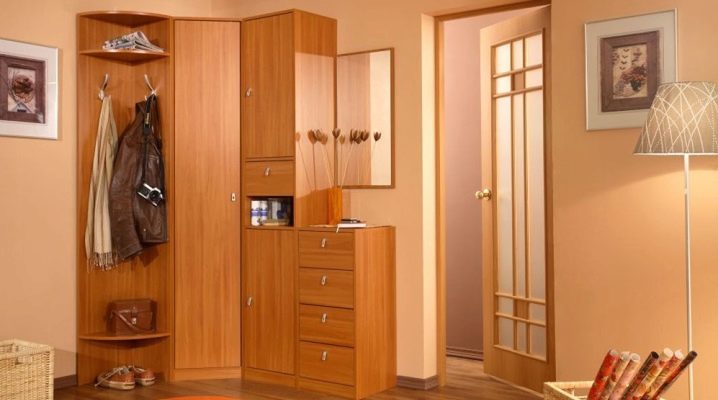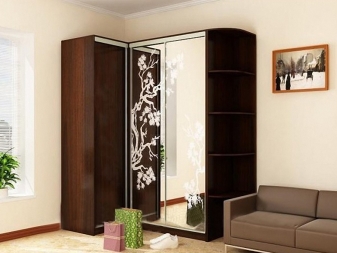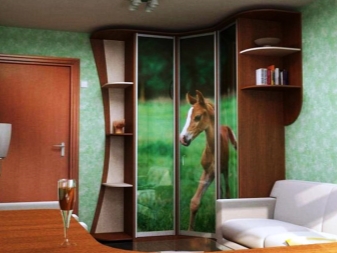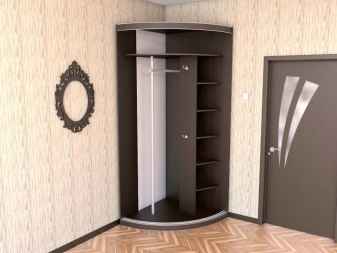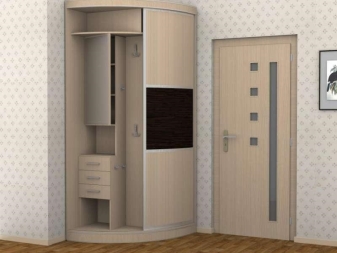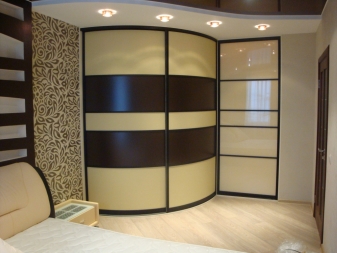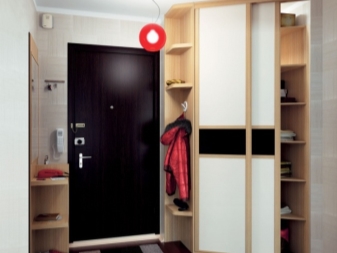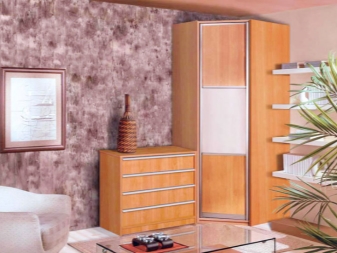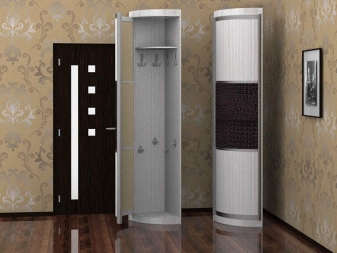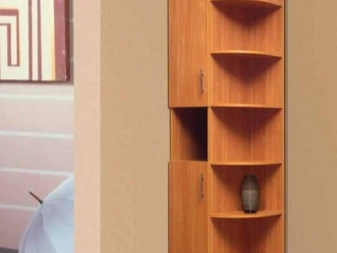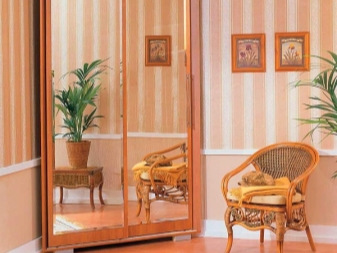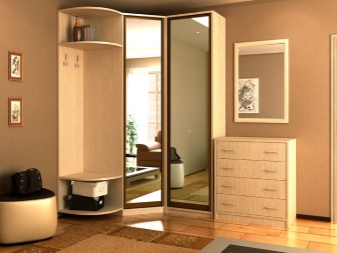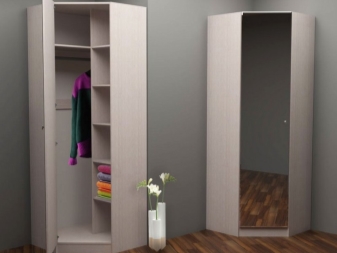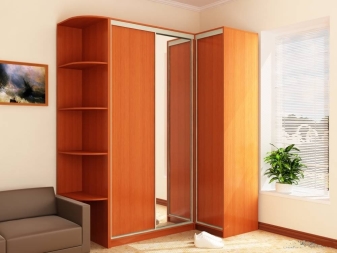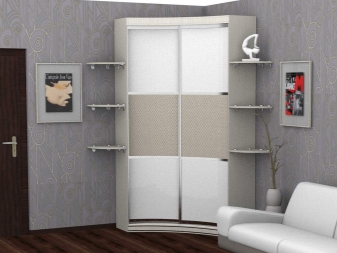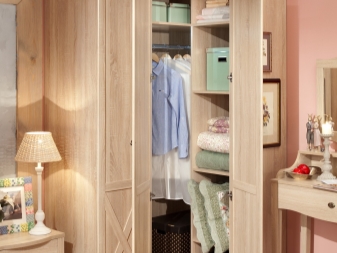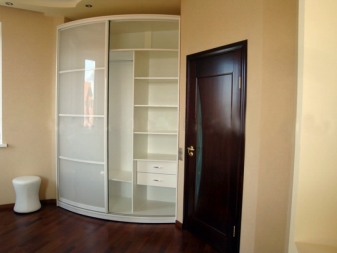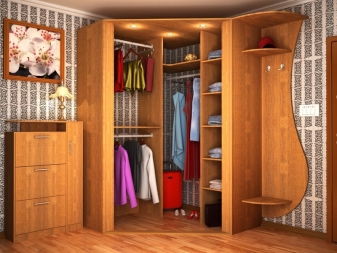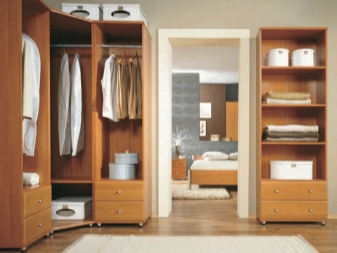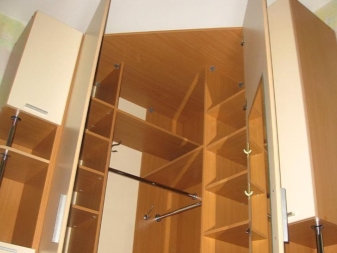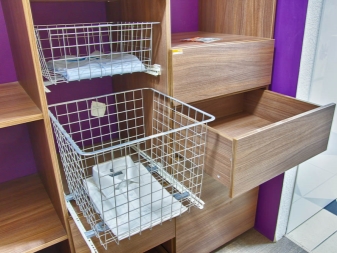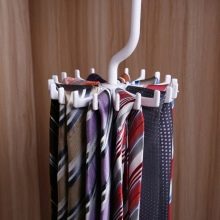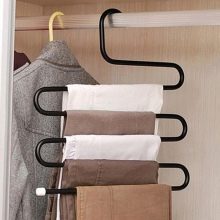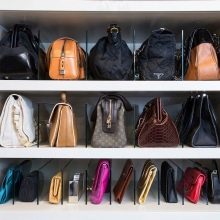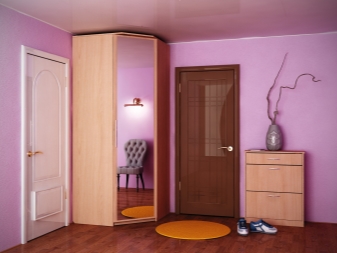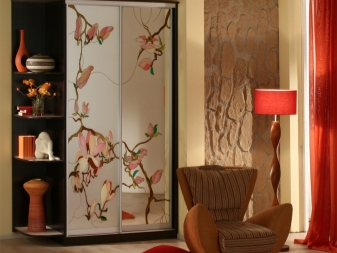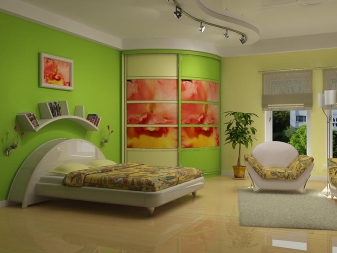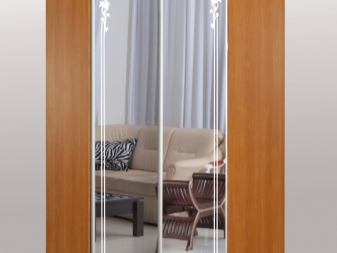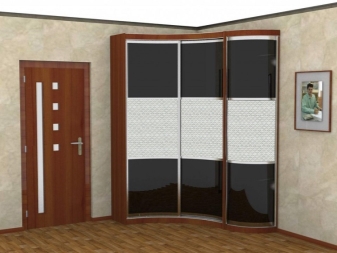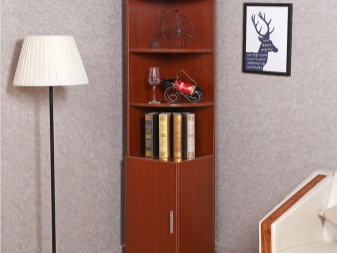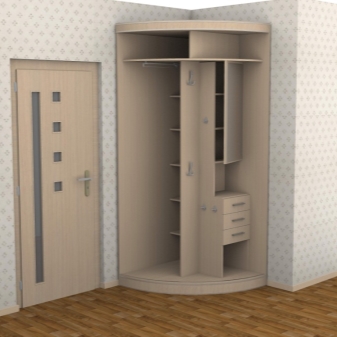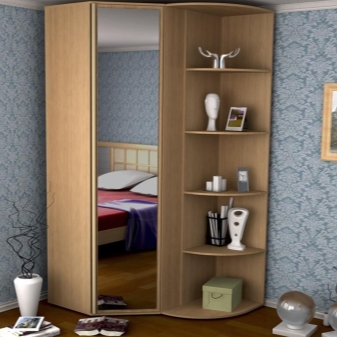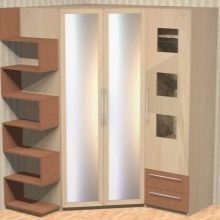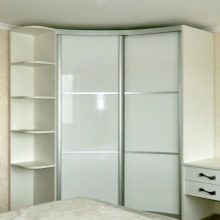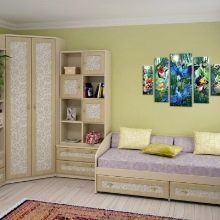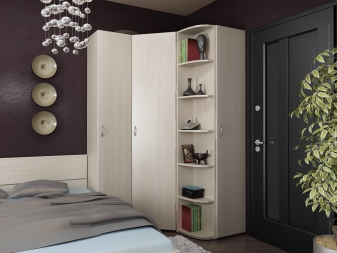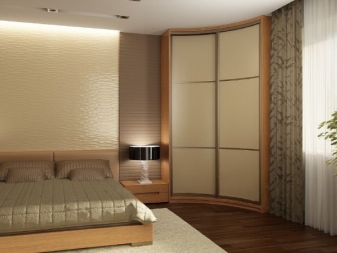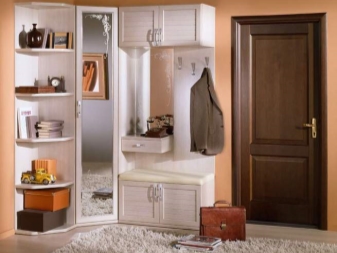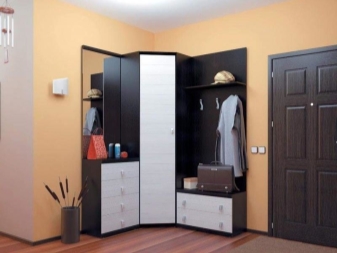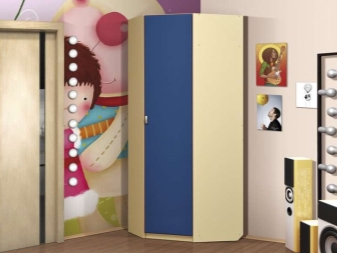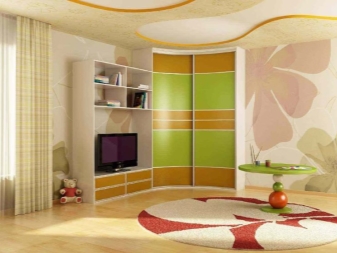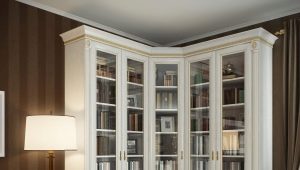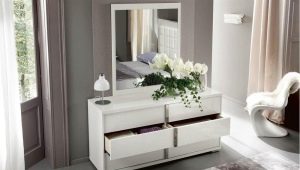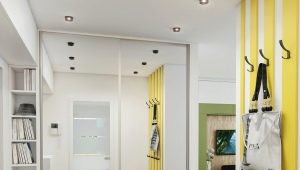Small corner cabinets
Over time, any family takes possession of a large number of things that need to be stored somewhere. This question will help solve even a small corner cabinet. It, possessing even small dimensions, will allow to use absolutely all free space. Such furniture takes even those corners that are never used. Despite the small size, these inexpensive corner models have a large capacity and harmoniously fit into almost any interior.
Benefits
Corner cabinets have several advantages:
- Spaciousness. Even small models can hold a large number of things.
- Ergonomic. Fit into the corner of any room, leaving free space around.
- Multifunctional. Used to accommodate a variety of things.
- Versatility. Suitable for the interior of any style due to the diverse design.
Kinds
There are built-in and freestanding corner cabinets.
In the first case, the walls of the cabinet are the structures of the room itself, to which the front doors are attached. This model of the cabinet is a stationary object. The advantage is its economy, and the minus is the impossibility of transferring to another place.
Freestanding models are called corner cabinet cabinets, which are more mobile. These compact products can be moved, for example, to the opposite corner or taken with you when moving.
The angular model, which is the most compact, is called cabinet case.
Forms
Corner cabinets vary in shape:
- triangular,
- trapezoidal
- pentagons
- radius,
- L-shaped.
Pentagonal and triangular corner models are quite large, so they are more suitable for a spacious room with symmetrical corners. Compact models are trapezoidal or L-shaped corner cabinets.
The plan of the trapezoid catch cabinet has a trapezium appearance. Due to this, they are well combined with the rest of the furniture. L-shaped on the plan look in the form of the letter G. Here, the angular space is optimally used. A small minus is the simplicity of the design.
Particularly noteworthy are radial corner models. These rounded cabinets are suitable for styles. Art Deco, Empire. Due to the complexity of manufacturing, they are expensive. Convex cabinets are somewhat bulky, and concave corner cabinets are small in size, they significantly save space, while possessing a good capacity.
Such models will fit in any corner.
Doors
Corner cabinets differ in the method of opening the door, which are hinged and sliding:
- Swing can be opened inside the room, they are simple and reliable. The main disadvantage is that you need a lot of space for opening.
- Sliding doors are typical of the coupe model, to open them, you just need to push the flaps to the side. They are good for small rooms or corridors.
Filling
Modern storage systems that fill the corner mini-cabinet contain many elements:
- Shelves. They are made of wood or metal, they put things in boxes, suitcases and many other things.
- The boxes. Drawers are designed to store different items of clothing. The best models of cabinets usually have closers for smooth advancement.
- Rods.This detail of the internal structure of the cabinet is necessary for clothes hanging on hangers. The height of the bar is different: for hanging the dress it is 140-160 cm, in order to hang trousers, skirts, shirts, enough height 95-120 cm.
- Baskets. Boxes in the form of baskets from a grid are needed for folded clothes or shoes. Thanks to the mesh material, the contents are clearly visible, this material also contributes to the ventilation. Baskets are supplied with rollers for easy promotion.
In addition, in the corner cabinets provide additional hooks and shelves for bags, belts, ties and other accessories.
Materials
For the manufacture of corner cabinets today use chipboard, wood, MDF. Chipboard has the most diverse colors. For lovers of rounded shapes, MDF was created, from which radial models are made. Solid wood is not as popular as before, but it is also used to create classic models.
There is a wide variety of finishes for corner cabinets:
- Mirror. With this method, you can decorate the hallway, expanding the small room visually, for this purpose mirrors are used inside and outside.
- Stained glass windowA spectacular way to decorate the door leaf: multi-colored glass pieces can be laid out a whole picture.
- Photo printing. New - absolutely any image is applied using modern technologies on the mirror surface of the cabinet.
- Sandblast drawing. By analogy with the previous version, drawing is applied on the glass. But unlike photo printing, glass retains its reflective properties.
- Special glass. Transparent or opaque glass surface with increased strength. For a variety of design solutions a layer of colored lacquer or photo image is applied under glass.
- Natural materials. Creative designers use the most unexpected materials for decorating the facade: leather, bamboo, rattan and others.
Almost never used only one way to decorate. As a rule, it is a combination of different materials. For example, chipboard and mirror or chipboard and glass.
Colour
Light colors usually emphasize dimensions, thus the cabinet looks more bulky than it really is. However, dark colors should be used with caution. To avoid the effect of a dark spot, the color of the corner cabinet must be in harmony with the main palette in the interior of the room.
A neutral gamut in brown or gray is always appropriate.
Fans of white furniture experts do not recommend unnecessary to supply it with mirrors in order to avoid a cold atmosphere, besides white color is mark, so you will need to stock up on cleaning products for furniture.
Use in the interior
Small corner cabinets are a magic wand for a small room. For example, it can be put in the hallway, hall, living room, nursery or bedroom:
- Bedroom. Bedroom - this is a place where the closet is one of the components of the interior, along with the bed. And if the bedroom is small-sized, it is a corner cabinet that helps in solving the problem of compact storage. This configuration makes the best use of the bedroom space. The most successful option in this case is the built-in model, which is installed between two adjacent walls. Such a cabinet, taking up very little space, contains a lot of necessary things. As a rule, the product is equipped with shelves, drawers, mezzanines, and hanger bars, which are fixed at different heights for various types of clothing.
A triangular cabinet with a mirror fits well into a miniature bedroom.In color, it should be combined with the decoration of the walls so as not to visually clutter up the bedroom space.
- The entrance hall. For a tiny hallway, an angular wardrobe is just a godsend. You can put clothes and shoes in it. Possessing compactness, such a cabinet usually takes place up to the ceiling, where at the top there are compartments for storing seasonal items. Visually, you can expand the space with a mirror facade, as well as light colors in the decoration. Given the whiteness of the white, preference is better to give shades of beige, lemon, pink. For example, the yellow color creates the illusion of sunlight. The mirror in the corridor also performs a functional task: you will be able to look at yourself in full growth before going out. In the narrow hallway is selected corner cabinet with a minimum depth, but high. For ease of use, it is better to equip it with exit doors or blinds.
Reception of rounded corners saves space well: for example, a concave corner wardrobe. This model is equipped with an original exit system for hangers, which makes it possible to accommodate a large amount of clothing.
- Children's For a child's room, the use of a small corner cabinet is extremely important. After all, you need more space to take away for games and sports. Here fit a spacious trapezoidal model with additional shelves. The little inhabitant of the room will keep order, putting there his toys. A higher compartment will be used to store clothing and bed linen.
For children's facade, you can decorate the stickers with images of cartoon characters or other drawings.
The corner cabinet-case will also perfectly fit into the room where children live, since he will not completely occupy the room, but, on the contrary, will make it more comfortable by teaching the student to clean his things carefully. Angular concave model is appropriate in the nursery due to its safety and the lack of sharp corners.
To find out how to choose a corner wardrobe, see the next video.
